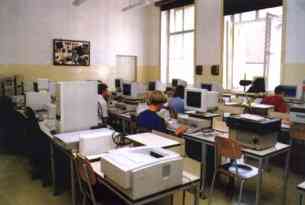5. School Year and Holidays
A school year in our country starts on 1st September and ends on 30th June. It is divided into two terms ( 1.9.-31.1. / 1.2.- 30.6.). At the end of each term every student is given a school report. Our scale consists of five marks from 1 (excellent) to 5 (failure). The main holiday is in two wonderful summer months - July and August. We also enjoy Christmas holiday (from 23rd December to 2nd January), Easter holiday (usually five days), a week of spring holiday (in February or March) and the shortest autumn holiday (two days).
At the end of each term every student is given a school report. Our scale consists of five marks from 1 (excellent) to 5 (failure). The main holiday is in two wonderful summer months - July and August. We also enjoy Christmas holiday (from 23rd December to 2nd January), Easter holiday (usually five days), a week of spring holiday (in February or March) and the shortest autumn holiday (two days).
Besides these school holidays there are state holidays which commemorate some important events in the Czech history:
- On 8th May the D-E Day and the liberation from fascism is celebrated.
- On 28th October the establishing of the independent Czechoslovak Republic in 1918
is commemorated.
- The 5th July is consecrated to SS.Cyril and Method, the missionaries, who brought
Christianity to Moravia in 863.
- The 6th July is the day, on which Jan Hus, a religious reformer, was burnt to death
on the stake in 1415.
Besides these 1st May is celebrated as Labour Day. Non-students and non-teachers also do not work on the 25th and 26th December, 1st January and Easter Monday and on weekends, of course.
According to the school survey the most important day during the year is 30th June. Shcool reports are handed over to our hands and we are surprised that the results are worse / better than we expected. But we do not care. The school is over and great months of freedom ahead. We have an assembly in the yard (in summer) and in the gym (in winter). Those of us who have reports with distinctions (it means that their marks must not be worse than two and the whole average of results above 1.5) are rewarded by the headmaster (usually 500,- Kè) and also winners of different sport competitions,which were held during the term are awarded some prizes.
There is an accepted truth that the school year is too long and the vacation too short. We would not mind if it were reverse. How many free days have you got in the course of the year ?
The school is over and great months of freedom ahead. We have an assembly in the yard (in summer) and in the gym (in winter). Those of us who have reports with distinctions (it means that their marks must not be worse than two and the whole average of results above 1.5) are rewarded by the headmaster (usually 500,- Kè) and also winners of different sport competitions,which were held during the term are awarded some prizes.
There is an accepted truth that the school year is too long and the vacation too short. We would not mind if it were reverse. How many free days have you got in the course of the year ?
6. Our school in the educational system of the Czech Republic.
School attendance in our country is compulsory from six to fifteen years of age (nine years). Most schools are directed and financed by the state, but since 1990 there has been a certain number of private schools, too.
The system of education is as follows:
1. Pre- school education is provided in nursery schools (or crechés) for babies to three years of age and in kindergartens ( from three to six).
2. Primary education ( 15-19) is provided in basic schools which consist of two stages: elementary (6-10) and higher (10-15). Special educational treatment is provided in special schools for children who require it on account of certain physical or mental hadicaps or for children who are simply below the level of intelligence required to cope with normal schools.
3. Secondary education (15-19) is provided in three types of schools:
- Grammar schools, which prepare students for university level studies. There is a
variety of grammar schools. Some last eight years for children aged 10-19. That
means some gifted pupils can leave primary school at ten and continue at a
grammar school. Next there are six-year-grammar schools for children aged 12-
19 and finally four-year-schools for 15-19 years old students.
-Special schools, which train students for various branches of industry,agriculture,
economy, medicine, and culture. The largest group is formed by technical schools
which give training in civil engineering, chemistry, transport, mining etc.
Our school is one of this kind.
The study at the special schools last four years and is completed by a school-leaving
(= graduation) examination. The students who pass this exam are able to go on
studying at a university or to take a job ( if they find any).

-Apprentice schools from which students go immediately to work. The training
lasts usually four years. These school combine practical work with technical and
general education.
4. University education (19-26) is provided in
- general universities (philosophy, theology, philology, pedagogy, law, medicine,
natural sciences, social sciences, arts and physical education).
- veterinary universities and pharmaceutical universities
- technical universities ( engineering, chemical technology etc.)
- agricultural universities
- art academies
- military and police academies.
All courses are completed with final state examinations. After these exams, the graduates are awarded university degrees.











